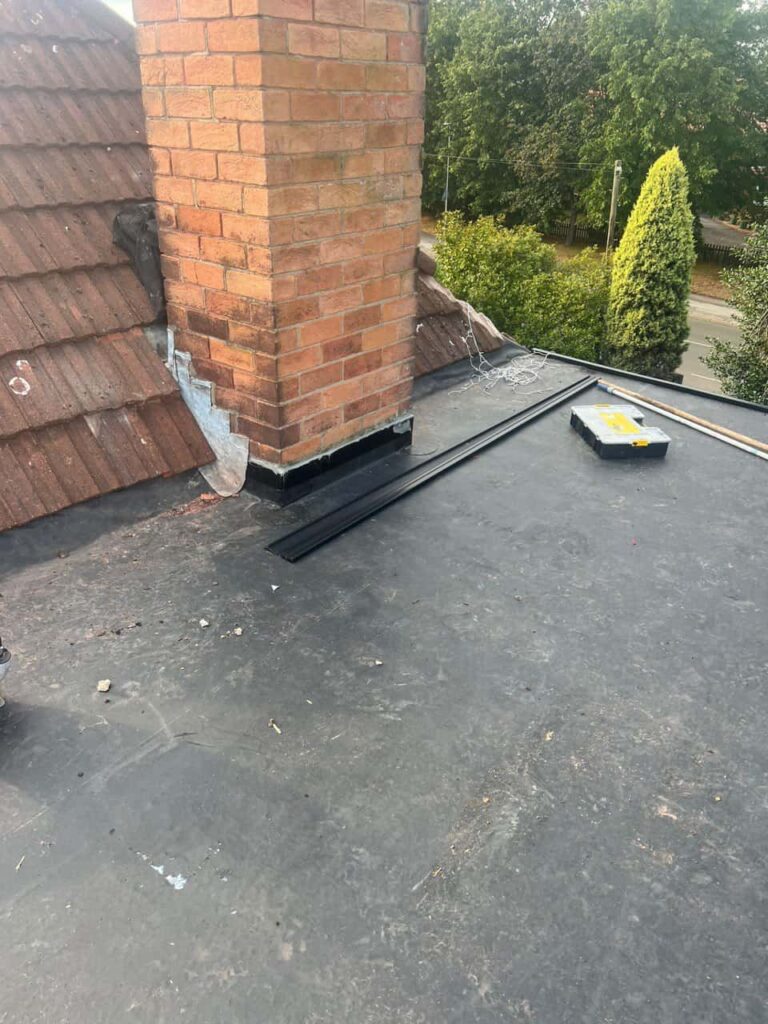Lead flashing is an essential component of any roofing system, playing a crucial role in keeping your roof sealed and protected from water damage. However, over time, flashing can develop issues that compromise the integrity of your roof, leading to leaks, dampness, and potentially costly repairs. At Southampton Roofing Repairs, we understand the importance of maintaining high-quality lead flashing to ensure your roof remains secure and watertight. In this blog, we’ll explore common lead flashing problems and how to keep your roof in top condition.
What is Lead Flashing?
Lead flashing is used to seal and protect the joints and edges of your roof where two different surfaces meet, such as around chimneys, skylights, vents, or dormers. Its primary function is to prevent water from penetrating these vulnerable areas, guiding rainwater safely off the roof and into the gutters. Due to its durability and flexibility, lead is a popular choice for flashing, but like all materials, it requires proper maintenance and occasional repair.
Common Lead Flashing Problems
- Cracking and Splitting
Over time, lead flashing can crack or split due to the natural expansion and contraction of the material caused by temperature changes. As the lead ages, it can become brittle and develop small cracks that allow water to seep into your roof. If left unaddressed, these small cracks can lead to more serious leaks and damage.
- Corrosion
Lead is highly resistant to corrosion, but prolonged exposure to moisture and harsh weather conditions can cause the surface of the flashing to oxidise or corrode. This can weaken the flashing and reduce its effectiveness in protecting your roof from water damage. Regular inspections and maintenance can help prevent corrosion from progressing.
- Loose or Dislodged Flashing
High winds, heavy rain, or improper installation can cause flashing to become loose or dislodged. If the flashing is not securely fastened, it will no longer provide an effective barrier against water penetration, allowing moisture to enter your roof through the gaps. It’s important to check your flashing after severe weather to ensure it is still in place.
- Leaks Around Chimneys and Roof Valleys
Flashing is often found around chimneys and in roof valleys—two areas that are especially prone to leaks. Over time, flashing in these areas can deteriorate or be improperly fitted, leading to water ingress. If you notice water stains on your ceiling or walls near these areas, it may be time to inspect and repair your flashing.
- Improper Installation
One of the most common causes of lead flashing problems is improper installation. If flashing is not installed correctly, it will not form a proper seal, leaving your roof vulnerable to leaks. Poor workmanship can lead to gaps, weak joints, or incorrect sizing, all of which reduce the effectiveness of your flashing.
How to Keep Your Roof Sealed and Secure
- Regular Roof Inspections
The best way to prevent lead flashing problems is through regular roof inspections. At Southampton Roofing Repairs, we recommend having your roof inspected at least once a year, particularly after severe weather conditions. A professional inspection can identify any potential issues with your flashing before they develop into more serious problems, saving you time and money in the long run.
- Prompt Repairs
If you notice any signs of flashing damage, such as water stains, damp spots, or visible gaps in the flashing, it’s important to act quickly. Prompt repairs can prevent water damage from spreading and protect the structural integrity of your roof. Addressing minor flashing problems early on can also prevent the need for more extensive and expensive repairs later.
- Proper Installation
Ensuring that your lead flashing is installed correctly is key to preventing future problems. Poorly installed flashing is more likely to develop gaps or become dislodged, leaving your roof vulnerable to leaks. At Southampton Roofing Repairs, we take great care to ensure that flashing is fitted precisely and securely, providing long-lasting protection against water infiltration.
- Use High-Quality Materials
When it comes to lead flashing, the quality of the materials used is just as important as the installation. High-grade lead flashing offers greater durability and resistance to weathering, helping to extend the lifespan of your roof. Investing in quality materials from the start can save you from costly repairs and replacements down the line.
- Seal and Maintain Roof Joints
Since flashing is primarily used to seal roof joints and other vulnerable areas, it’s important to keep these areas well-maintained. Regularly checking and resealing joints as needed will help ensure that your flashing continues to provide effective protection against water damage. Professional roofers can assess and reseal flashing to keep it in top condition.
Why Choose Southampton Roofing Repairs for Flashing Repairs?
At Southampton Roofing Repairs, we are committed to delivering top-quality roofing services that protect your home from the elements. Our experienced team specialises in lead flashing installation, repair, and maintenance, ensuring your roof remains sealed, secure, and watertight. Whether you’re dealing with a small leak or need a full flashing replacement, we have the expertise to handle any roofing challenge with precision and care.
Conclusion
Lead flashing plays a crucial role in keeping your roof protected from water damage, but it requires proper maintenance to function effectively. By addressing common flashing problems such as cracking, corrosion, and dislodgement, you can ensure your roof remains sealed and secure. At Southampton Roofing Repairs, we offer expert flashing services to keep your roof in top condition. Contact us today to schedule an inspection and learn how we can help protect your home in Southampton, Hampshire.
Call us on: 023 8235 1781
Click here to find out more about Southampton Roofing Repairs
Click here to complete our contact form and see how we can help with your Roofing needs.

